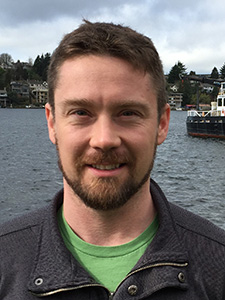RICHARD BERG
University of Washington
Quantifying global rates of magnesium uptake into marine sediments
Abstract
Magnesium uptake during authigenic mineral formation in marine sediments is a poorly- constrained sink in the global oceanic magnesium (Mg) budget. The uncertainties in the Mg budget propagate into other chemical budgets such as carbon and calcium, and into interpretations of reconstructions of seawater δ26Mg and Mg/Ca ratios. I propose to constrain the magnitude and distribution of global Mg uptake rates in marine sediments using a compilation of shipboard data from DSDP, ODP, and IODP expeditions, and to investigate the specific processes sequestering Mg using shore-based pore water δ26Mg measurements from representative continental margin locations. These quantitative estimates will produce a global map of Mg uptake rates, and constrain the contribution of this sink to the global oceanic Mg cycle.
Biography
Exploring the mountains, desert, and coastal areas of Southern California most of my life ignited a curiosity about how different environments are formed and led me into the geosciences. After being introduced to marine geology and the rich field of geochemistry at the University of California, San Diego, I decided to pursue a master’s in Earth Sciences, studying biogeochemical cycles in marine sediments. During this time, I developed an interest in how and why these processes vary across different environments, and came to realize how useful computer modeling techniques could be in quantifying and characterizing these processes. Now, with Dr. Evan Solomon’s guidance at the University of Washington, I am expanding on this approach by combining pore fluid chemistry and physical property measurements with computer modeling and machine learning techniques to investigate the role of sediment diagenesis on the global cycling of magnesium in the deep subseafloor and its potential effect on ocean chemistry.







